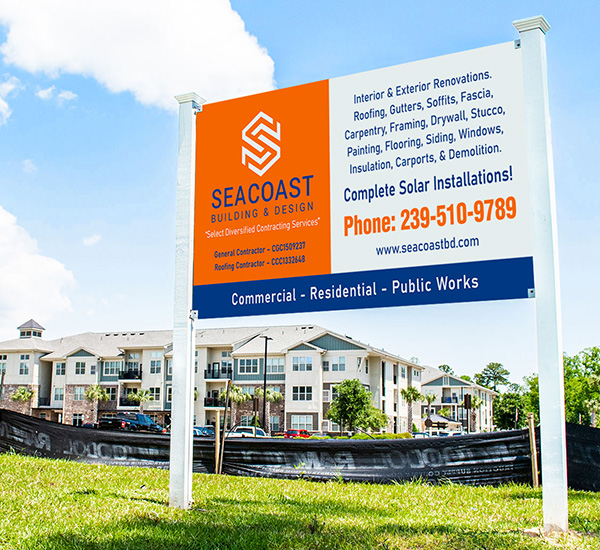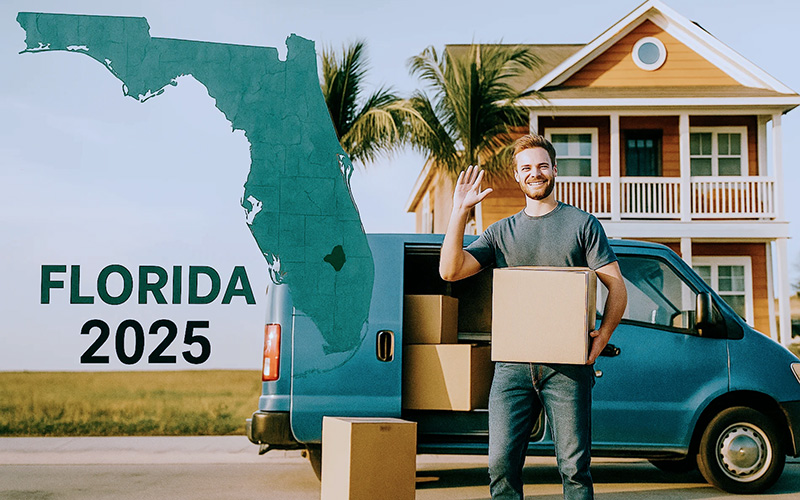August 25, 2025
Florida’s 2025 Residential Demographics
As 2025 draws to a close, Florida’s demographic landscape is evolving at a breakneck pace, with the state’s population now surpassing 23.8 million residents—a staggering 2% increase from the previous year alone. This Florida demographics 2025 overview isn’t merely a collection of statistics; it’s a dynamic forecast revealing untapped potential for coastal construction in Florida and home renovations in Florida. Fueled by robust domestic migration, an influx of retirees, and a diversifying workforce, these trends are creating unprecedented demand for resilient, innovative building solutions along the state’s sun-drenched shorelines. From Miami’s bustling high-rises to the tranquil beaches of the Gulf Coast, the ripple effects of this growth are transforming communities and challenging builders to adapt swiftly.
At Seacoast Building & Design, we’ve witnessed this shift firsthand. Our teams have fielded a 30% surge in consultations for storm-resistant roofing and adaptive renovations since the start of the year, as newcomers and long-time residents alike seek homes that withstand both Florida’s humid climate and its economic vibrancy. In this expanded guide, we’ll dive deep into the numbers, explore regional nuances, address emerging challenges, and deliver actionable strategies to help you capitalize on population growth in Florida construction. Whether you’re a homeowner eyeing an upgrade or a contractor scouting opportunities, understanding these Florida demographics 2025 trends is key to building for tomorrow—today.
Unpacking Florida’s 2025 Population Boom: Key Stats and Trends
Florida’s population growth trajectory has solidified its status as the nation’s top performer, with an estimated 467,000 new residents added so far in 2025, pushing the total to 23.84 million. This marks a 3.37% jump from 2024’s 23.27 million, outpacing every other state and driven primarily by net domestic migration exceeding 350,000 individuals. Unlike the national average of 0.5% growth, Florida’s influx is a magnet for opportunity-seekers fleeing high-tax states like New York and California, as well as retirees drawn to the no-income-tax paradise.
Delving into the 2025 Florida demographics, age cohorts reveal a state gracefully aging while injecting youthful energy. The senior segment (65+) now comprises 22.4% of the population—over 5.3 million strong—up from 21% in 2020, reflecting the “silver tsunami” of Baby Boomers settling into coastal enclaves. This group, particularly those aged 60-69, dominates migration patterns, seeking low-maintenance, accessible homes with features like single-story layouts and energy-efficient roofing. Meanwhile, the working-age population (18-64) holds steady at 71.6%, bolstered by young professionals in tech and healthcare hubs, while families with children under 18 make up about 6%, fueling demand for spacious family additions.
Racial and ethnic diversity adds rich layers to these trends. Non-Hispanic Whites remain the plurality at 49.1%, but the Hispanic or Latino population has swelled to 27% (approximately 6.4 million), with significant growth in South Florida suburbs where multigenerational living is the norm. Black or African American residents account for 14.8%, concentrated in urban centers like Jacksonville. This mosaic influences design preferences—from vibrant, open-concept kitchens for Hispanic families to fortified, tech-savvy spaces for diverse young migrants.
| Demographic Segment | 2025 Estimate | Growth Driver & Construction Tie-In |
|---|---|---|
| Total Population | 23.84M | +2% YoY; drives 15-20% increase in coastal housing permits |
| Seniors (65+) | 5.3M | Aging migration boosts accessible renovations like TPO roofing for energy savings |
| Net Migration | +350K | Domestic influx to beaches spurs custom, storm-proof builds |
| Hispanic Population | 6.4M | Family expansions in Miami-Dade demand durable, expandable designs |
| Working-Age (18-64) | 17.1M | Professional relocations fuel mixed-use developments in Tampa Bay |
These shifts aren’t abstract; they’re reshaping everything from school enrollments to traffic patterns, with direct implications for population growth and Florida’s construction industry. As we look to 2030, projections from the Bureau of Economic and Business Research (BEBR) forecast another 1.4 million residents, amplifying the need for forward-thinking infrastructure.
Regional Hotspots: Where Florida’s Demographic Boom is Hottest
While statewide trends set the stage, Florida demographics 2025 vary dramatically by region, creating micro-markets ripe for targeted coastal construction Florida investments. South Florida—encompassing Miami-Dade, Broward, and Palm Beach Counties—leads with a combined population nearing 6.5 million, swollen by 150,000 migrants in 2025 alone. Here, Hispanic growth (now 40%+) drives demand for vibrant, communal home renovations, such as outdoor kitchens and resilient patios fortified against salt-air corrosion. Seacoast Building & Design recently completed a series of R-Panel roof upgrades in Fort Lauderdale, enhancing wind resistance for high-density condo conversions.
Shifting west to the Gulf Coast, counties like Lee (Cape Coral-Fort Myers) and Collier (Naples) have seen 5% population spikes, attracting affluent retirees and remote workers. With seniors comprising 28% of residents, home renovations in Florida focus on accessibility: think elevated entries against sea-level rise and solar-integrated TPO systems to slash cooling costs in these sweltering zones. Infrastructure strains are evident—roads and utilities lag behind the boom, prompting $2 billion in state-funded coastal resiliency projects that savvy builders can tie into.
Up north, the Panhandle and Northeast (e.g., Jacksonville) offer affordability draws, with Duval County’s 1.1 million residents growing by 2.5% due to blue-collar migration. Construction here emphasizes hurricane-hardened family homes, with a 20% rise in single-family permits. Tampa Bay bridges these worlds, blending urban influx (young professionals at 35%) with retiree enclaves, where mixed-use developments incorporating green roofs are surging to meet diverse needs.
Each hotspot presents unique population growth opportunities in Florida: South for density, Gulf for luxury resilience, North for value-driven volume. Mapping your project to these patterns can yield 15-25% faster ROI through aligned demand.
How Surging Demographics Are Reshaping Coastal Construction in Florida
The intersection of Florida demographics 2025 and coastal construction in Florida is nothing short of revolutionary. With 250,000+ new housing units required annually to match growth, the sector is valued at $47 billion in active projects, spanning residential rehabs to commercial marvels. Migration-fueled demand has spiked inquiries for wind-mitigated features by 25%, especially after the 2024 hurricane season, when TPO and metal roofing proved indispensable for rapid recovery.
Economically, this boom injects vitality: construction jobs have ballooned to 600,000 statewide, with coastal firms like ours reporting doubled revenues from renovation contracts tailored to newcomers. Seniors drive 40% of reno spend on safety upgrades—grab bars, non-slip decks, and reflective roofs to combat heat islands—while families push for expansions like ADUs (accessory dwelling units) in high-migration burbs. Mixed-use trends dominate commercial builds, with 30% of 2025 permits blending retail, offices, and residences to serve walkable, diverse communities.
Yet, innovation is key. Home renovations in Florida now incorporate smart tech: IoT-enabled storm shutters for migrants wary of evacuations, or modular panels for quick senior adaptations. At Seacoast, our hybrid systems—merging TPO’s cool reflectivity with R-Panel’s durability—have become go-tos, reducing insurance premiums by up to 20% in flood-vulnerable zones.
Navigating Challenges: Affordability, Storms, and Sustainability in a Growing Florida
No boom is without hurdles, and Florida demographics 2025 amplify longstanding pain points in coastal construction in Florida. Housing affordability tops the list: median home prices hit $420,000, pricing out 30% of new migrants and stalling 10% of planned starts. Solutions? Prefab elements and cost-effective renovations, like our vinyl siding overlays that cut timelines by 40%.
Climate risks loom larger with population density: Gulf Coast infrastructure buckles under +100,000 residents yearly, raising flood concerns and mandating elevated builds per updated codes. Sustainability counters this—2025 trends favor net-zero designs, with 25% of projects integrating permeable pavers and native landscaping to mitigate runoff.
Labor shortages, too: Growth strains the workforce, but upskilling via apprenticeships can bridge gaps. By addressing these head-on, builders turn challenges into differentiators, fostering resilient population growth in Florida’s construction industry.
Actionable Insights: Leveraging 2025 Trends for Your Next Build or Renovation
Harnessing Florida demographics 2025 requires a strategy. Start with data-driven site selection: Use BEBR tools to pinpoint high-migration ZIPs, then customize—eco-roofs for Tampa’s millennials, accessible ramps for Sarasota’s elders. Budget for hybrids: Allocate 15% to resilient materials like our TPO/R-Panel combos, yielding 10-year warranties against storms.
Phased planning mitigates affordability woes: Begin with core renovations (roofing, foundations) before luxuries. Partner with local suppliers to improve supply chain efficiency and leverage incentives such as Florida’s green building rebates. Pro tip: Conduct demographic audits quarterly—tools like Census APIs can forecast demand shifts, ensuring your home renovations in Florida stay ahead.
By 2030, with 25 million residents, early adopters will dominate. Seacoast Building & Design offers complimentary trend assessments—reach out to blueprint your edge.
Case Studies: Real-World Wins in Demographic-Driven Builds
Real results illuminate the path. In Palm Beach, we retrofitted a 1950s bungalow for a migrating family of six: R-Panel roofing and expanded eaves withstood 140-mph winds. At the same time, open-plan renovations accommodated multi-generational living—boosting property value 35%.
On the Gulf, a Naples retiree community got TPO overhauls for 50 units: Energy savings hit 25%, slashing AC bills amid senior heat sensitivities. And in Jacksonville, a mixed-use project for young pros featured sustainable facades, drawing 200 leases in months.
These wins underscore: Tailor to Florida demographics 2025, and coastal construction in Florida thrives.
In summary, Florida’s 2025 demographics are the catalyst for a construction renaissance, blending growth with grit. From stats to strategies, this guide equips you to build boldly. Sources: U.S. Census Bureau, World Population Review, BEBR reports, and state economic overviews. Contact Seacoast Building & Design for personalized insights—let’s construct the future together.

Seacoast Building & Design
Office: (941) 500-5431
Hours of Operation:
Weekdays – 8 am to 6 pm
Saturday – 9 am to 3 pm
Or by Special Appointment.
Payment Methods:
Cash, Visa, Master Card, Amex, Discover, Invoice, Wire, ACH
Company Owners:
Clear & Chandra Dayland


